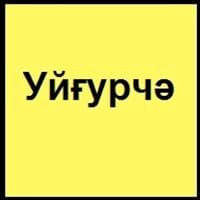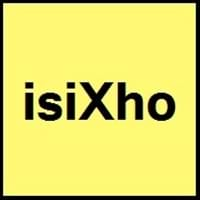Uyghur and Xhosa
Countries
China
South Africa
National Language
China
South Africa
Second Language
Not spoken in any of the countries
Lesotho, South Africa
Speaking Continents
Asia
Africa
Minority Language
Kazakhstan, Uzbekistan
Botswana, Lesotho
Regulated By
Working Committee of Ethnic Language and Writing of Xinjiang Uyghur Autonomous Region
Not Available
Interesting Facts
- Uyghur language has large quantity of loan words from Persian, Russian and Chinese.
- Uyghur was originally written with the Orkhon Alphabets.
- Xhosa has 15 click sounds, borrowed from the khoi-khoi and san languages of the South Africa.
- The same sequence of consonants and vowels can have different meaning when said with different tones, so Xhosa is tonal.
Similar To
Uzbek Language
Zulu, Swazi, and Ndebele
Derived From
Gokturk Language
Khoi-Khoi and San Languages
Alphabets in
Uyghur-Alphabets.jpg#200
Xhosa-Alphabets.jpg#200
Scripts
Arabic, Cyrillic, Latin
Latin
Writing Direction
Left-To-Right, Vertical, Top-To-Bottom
Not Available
Hello
Ässalamu läykum.
Molo
Thank You
rakhmat
Ndiyabulela
How Are You?
Yakshimasiz? / Qandaq ahwalingiz?
Unjani
Good Night
Kachlikingz khayrilik bolsun
Ulale kakuhle
Good Evening
Kachlikingz khayrilik bolsun!
Ubusuku obuhle
Good Afternoon
Not Available
Uben' emva kwemini entle
Good Morning
Atiganlikingz khayrilik bolsun!
Molo
Sorry
kachurung
Ndicela uxolo
Bye
Khayr khosh
Uhambe/Usale kakuhle
I Love You
sizni yahshi kOrman
Ndiyakuthanda
Excuse Me
Kachurung
Uxolo
Where They Speak
China
South Africa
Where They Speak
China
South Africa
Where They Speak
China
South Africa
Second Language Speakers
Not Available
Native Name
Уйғур /ئۇيغۇر (ujġgur / uyghur)
isiXhosa
Alternative Names
Uighuir, Uighur, Uiguir, Uigur, Uygur, Weiwu’er, Wiga
“Cauzuh” (pej.), Isixhosa, Koosa, Xosa
French Name
ouïgour
xhosa
German Name
Uigurisch
Xhosa-Sprache
Pronunciation
[ʊjʁʊrˈtʃɛ], [ʊjˈʁʊr tili]
Not Available
Ethnicity
Uyghur
amaXhosa, amaBhaca
Language Family
Turkic Family
Niger-Congo Family
Subgroup
Not Available
Benue-Congo
Branch
Not Available
Bantu
Early Forms
Karakhanid, Chagatai, Eastern Turki
No early forms
Standard Forms
Uyghur
isiXhosa
Language Position
Not Available
Signed Forms
Not Available
Signed Xhosa
Scope
Not Available
Individual
ISO 639 6
Not Available
Not Available
Glottocode
uigh1240
xhos1239
Linguasphere
No data Available
99-AUT-fa
Language Type
Not Available
Living
Language Linguistic Typology
Not Available
Subject-Verb-Object
Language Morphological Typology
Not Available
Not Available
All Uyghur and Xhosa Dialects
Most languages have dialects where each dialect differ from other dialect with respect to grammar and vocabulary. Here you will get to know all Uyghur and Xhosa dialects. Various dialects of Uyghur and Xhosa language differ in their pronunciations and words. Dialects of Uyghur are spoken in different Uyghur Speaking Countries whereas Xhosa Dialects are spoken in different Xhosa speaking countries. Also the number of people speaking Uyghur vs Xhosa Dialects varies from few thousands to many millions. Some of the Uyghur dialects include: Turpan, Hotan. Xhosa dialects include: Gcaleka , Thembu. Also learn about dialects in South American Languages and North American Languages.
Uyghur and Xhosa Speaking population
Uyghur and Xhosa speaking population is one of the factors based on which Uyghur and Xhosa languages can be compared. The total count of Uyghur and Xhosa Speaking population in percentage is also given. The percentage of people speaking Uyghur language is 0.12 % whereas the percentage of people speaking Xhosa language is 0.11 %. When we compare the speaking population of any two languages we get to know which of two languages is more popular. Find more details about how many people speak Uyghur and Xhosa on Uyghur vs Xhosa where you will get native speakers, speaking population in percentage and native names.
Uyghur and Xhosa Language Codes
Uyghur and Xhosa language codes are used in those applications where using language names are tedious. Uyghur and Xhosa Language Codes include all the international language codes, glottocodes and linguasphere.





